- Tips for Growing Broccoli
- Choosing the Right Variety
- Taste
- Size
- Growing Conditions
- Recommended Varieties
- Understanding Soil Requirements
- Soil Testing
- Fertilizing
- Watering
- Providing Adequate Sunlight
- Watering and Fertilizing
- Watering:
- Fertilizing:
- Monitoring:
- Controlling Pests and Diseases
- Pests
- Diseases
- Harvesting at the Right Time
- Storing and Using Harvested Broccoli
- Storing and Preserving Broccoli
- 1. Cooling and Washing
- 2. Refrigerating
- 3. Freezing
- 4. Preserving Broccoli in Other Forms
- 5. Using a Food Dehydrator
- Delicious Broccoli Recipes to Try
- 1. Roasted Broccoli with Parmesan
- 2. Broccoli Soup
- 3. Broccoli Salad
- 4. Broccoli Stir-Fry
- 5. Broccoli and Cheese Casserole
- “Question-Answer”
- What are some tips for growing broccoli?
- Can broccoli be grown in containers?
- What are some common varieties of broccoli?
- How long does it take for broccoli to mature?
- Can broccoli be grown in hot climates?
- What are some natural pest control methods for broccoli?
- “Video” 5 MUST-FOLLOW Tips for Harvesting Broccoli!
Broccoli is a versatile and nutritious vegetable that is a staple in many kitchens around the world. Grown for its edible flowering head, broccoli is a member of the cabbage family and is packed with essential vitamins and minerals. Whether you are a seasoned gardener or new to growing your own food, this article will provide you with valuable tips for successfully growing broccoli in your own garden.
When it comes to growing broccoli, it’s important to choose the right variety for your climate and growing conditions. There are several different types of broccoli to choose from, including traditional green varieties, as well as purple, white, and romanesco types. Each variety has its own unique flavor profile and visual appeal.
If you live in a colder climate, you may want to consider growing broccoli that is more tolerant to cold temperatures. Some cold-hardy varieties include Arcadia, Packman, and Diplomat. These varieties are more resistant to frost and can withstand colder temperatures, allowing you to enjoy fresh broccoli well into the winter months.
Another important factor to consider when growing broccoli is soil quality and fertility. Broccoli prefers well-draining soil that is rich in organic matter. Before planting, prepare your soil by adding compost or well-rotted manure to improve fertility. It’s also important to keep a close eye on moisture levels, as broccoli plants require consistent watering to prevent the heads from becoming dry and woody.
In conclusion, growing broccoli in your own garden is a rewarding experience that allows you to enjoy this nutritious vegetable at its peak freshness. By selecting the right variety for your climate, preparing your soil properly, and providing consistent care, you will be on your way to harvesting a bountiful crop of delicious and healthy broccoli.
Tips for Growing Broccoli
- Choose the right variety: There are many different varieties of broccoli, each with their own unique characteristics. Some varieties are better suited for colder climates, while others are more adaptable to warmer temperatures. Choose a variety that is well-suited to your specific growing conditions.
- Start seeds indoors: Broccoli can be started from seed indoors about 6-8 weeks before the last expected frost date. This will give the plants a head start and allow them to establish before being transplanted outdoors.
- Transplant carefully: When it’s time to transplant your broccoli seedlings outdoors, be sure to handle them carefully to avoid damaging their roots. Plant them in well-drained soil and space them about 18-24 inches apart.
- Provide adequate sunlight: Broccoli plants need at least 6 hours of direct sunlight each day to thrive. Place them in a sunny spot in your garden to ensure they receive enough light.
- Water regularly: Keep the soil evenly moist throughout the growing season. Broccoli plants need about 1-1.5 inches of water per week. Be careful not to overwater, as this can lead to root rot.
- Fertilize appropriately: Broccoli plants are heavy feeders and require regular fertilization. Use a balanced fertilizer high in nitrogen to promote healthy growth. Apply the fertilizer according to the package instructions.
- Protect against pests: Broccoli plants are susceptible to a variety of pests, including aphids, cabbage worms, and flea beetles. Take steps to protect your plants by using row covers, applying organic pest control products, or encouraging natural predators like ladybugs.
- Harvest at the right time: Harvest your broccoli heads when they are fully developed but before the individual flower buds start to open. Cut the heads off using a sharp knife, leaving about 6 inches of stem attached. This will encourage additional side shoots to develop.
Choosing the Right Variety
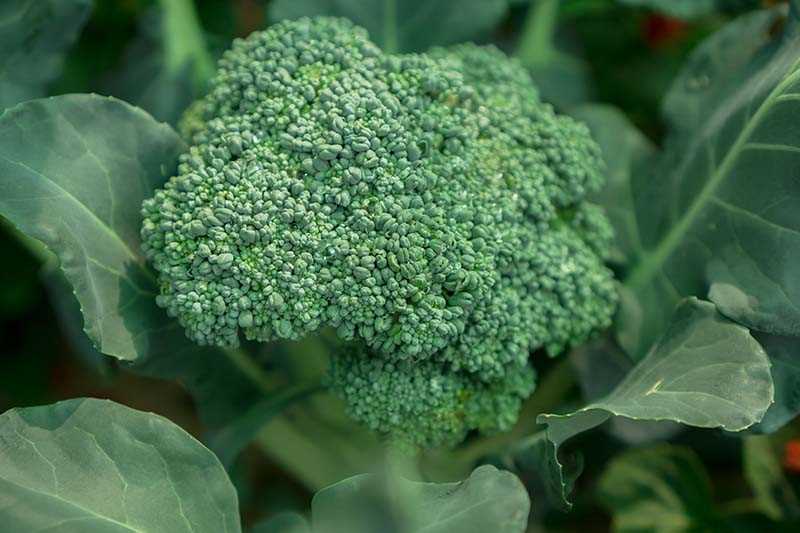
When it comes to growing broccoli, choosing the right variety is an important decision that can have a big impact on your gardening success. There are several factors to consider when selecting a broccoli variety, including taste, size, and growing conditions.
Taste
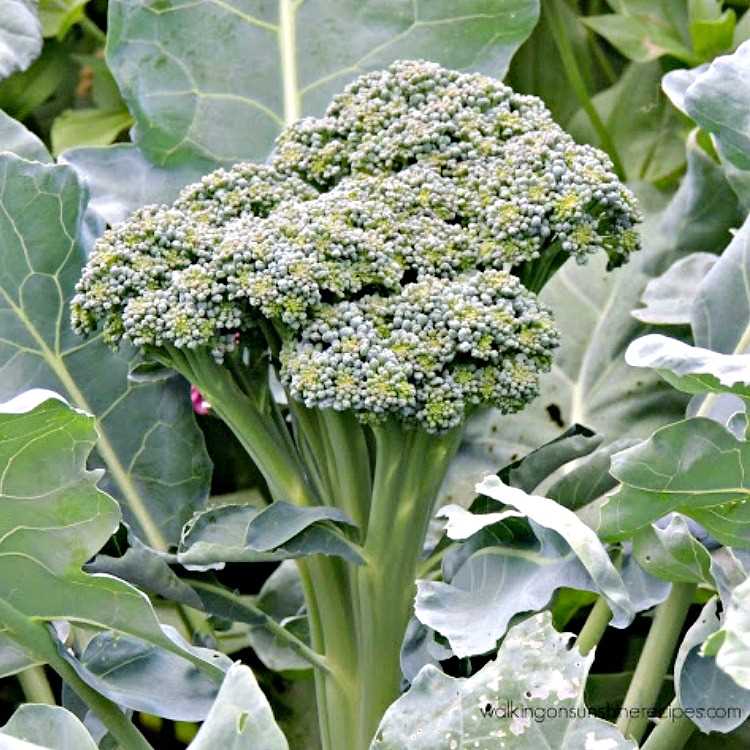
Broccoli varieties can have different flavors and textures, so it’s important to choose one that suits your palate. Some varieties have a mild, sweet taste, while others have a stronger, more bitter flavor. Consider your personal preferences when selecting a variety.
Size
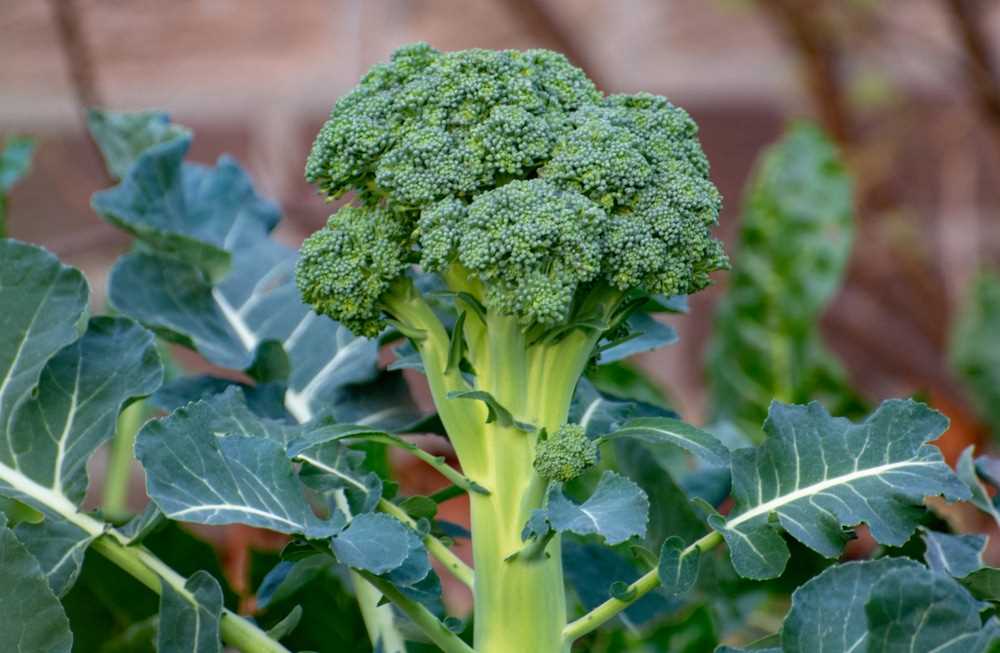
The size of the broccoli heads can vary depending on the variety. Some varieties produce small, compact heads that are perfect for single servings, while others produce larger heads that are great for family meals or for preserving. Consider how much broccoli you typically consume and choose a variety that suits your needs.
Growing Conditions
Not all broccoli varieties are created equal when it comes to growing conditions. Some varieties are more heat-tolerant and can withstand warmer temperatures, while others are more cold-tolerant and can handle frost and cooler climates. Consider the climate in your area and choose a variety that is well-suited to your growing conditions.
Recommended Varieties
Here are a few popular broccoli varieties that you may want to consider:
- Calabrese: This variety is known for its large heads and excellent flavor.
- DeCicco: This variety produces smaller heads and is great for continuous harvesting.
- Green Magic: This heat-tolerant variety is perfect for growing in warmer climates.
- Romanesco: This unique variety has a striking appearance and a delicious, nutty flavor.
Remember, choosing the right variety is an important step in growing successful broccoli. Take the time to consider your taste preferences, size requirements, and growing conditions to ensure that you select a variety that will thrive in your garden.
Understanding Soil Requirements
Broccoli plants thrive in well-drained soil that is rich in organic matter. The soil should have a pH level between 6.0 and 7.0, which is slightly acidic to neutral. This pH range provides an optimal environment for the plants to absorb essential nutrients.
Before planting broccoli, it is important to prepare the soil properly. Start by removing any weeds or grass from the planting area. Loosen the soil to a depth of at least 12 inches using a garden fork or a tiller. This will improve drainage and ensure that the roots can penetrate easily.
Adding organic matter, such as compost or aged manure, to the soil is highly beneficial for broccoli plants. Organic matter helps to improve soil structure, retain moisture, and provide essential nutrients. Spread a layer of compost or aged manure over the soil and mix it in thoroughly with a garden fork or a tiller.
Soil Testing
Conducting a soil test is a great way to determine the nutrient content and pH level of your soil. You can purchase a soil test kit from a garden center or send a soil sample to a lab for analysis. The results from the soil test will help you make informed decisions about soil amendments and fertilizers.
Fertilizing
Broccoli plants require a balanced fertilizer that is high in nitrogen, phosphorus, and potassium. Before planting, you can apply a slow-release granular fertilizer according to the package instructions. This will provide a steady supply of nutrients throughout the growing season.
Additionally, you can top-dress the plants with compost or a nitrogen-rich fertilizer every few weeks to promote healthy growth. Be careful not to over-fertilize, as excessive nitrogen can lead to lush foliage but poor broccoli head development.
Watering
Proper watering is crucial for the success of broccoli plants. They require consistent moisture, especially during the head formation stage. The soil should be kept evenly moist, but not waterlogged.
Water your broccoli plants deeply, providing about 1 inch of water per week. Mulching around the base of the plants with straw or wood chips can help retain moisture and reduce weed growth.
Regularly monitor the soil moisture levels and adjust the watering frequency as needed. A moisture meter can be a handy tool to determine if the soil is adequately moist.
By understanding the soil requirements for growing broccoli, you can create an optimal environment that promotes healthy growth and maximizes your harvest.
Providing Adequate Sunlight
Broccoli is a sun-loving plant that requires at least six hours of direct sunlight per day. Adequate sunlight is crucial for its growth, as it helps in photosynthesis and the production of chlorophyll. Here are some tips to ensure your broccoli plants get enough sunlight:
- Choose a suitable location: Select a spot in your garden that receives full sun throughout the day. Avoid areas that are shaded by trees, buildings, or other plants.
- Clear any obstructions: Trim or remove any branches or foliage that may be blocking sunlight from reaching your broccoli plants. This will help maximize the amount of sunlight they receive.
- Utilize reflective surfaces: Place reflective surfaces, such as aluminum foil or white sheets, around your broccoli plants. These surfaces will help redirect sunlight towards the plants, increasing their exposure to light.
- Rotate your plants: If you have multiple broccoli plants, rotate them periodically to ensure all sides receive equal sunlight. This will prevent one side from becoming overshadowed and stunted in growth.
By following these tips, you can ensure that your broccoli plants receive adequate sunlight, enabling them to grow and develop into healthy, productive crops.
Watering and Fertilizing
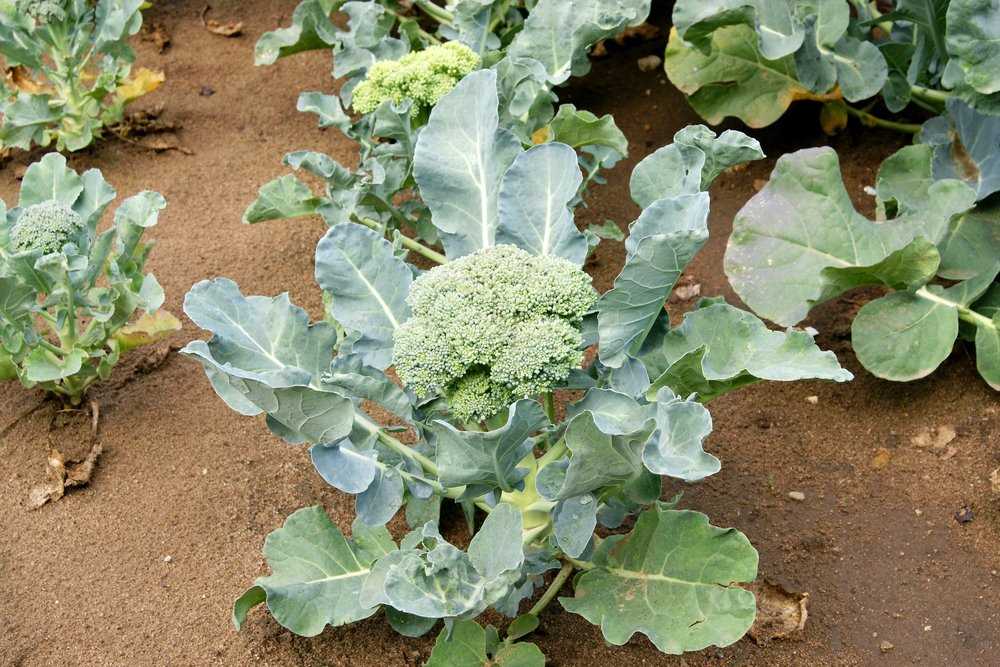
Proper watering and fertilizing can greatly impact the growth and health of your broccoli plants. Here are some tips to help you water and fertilize your broccoli plants effectively:
Watering:
- Broccoli plants require consistent moisture, so it is important to water them regularly.
- Water deeply, ensuring that the water reaches the roots. Shallow watering can lead to shallow root development.
- It is best to water broccoli plants in the morning or early afternoon to allow for maximum absorption and to prevent the foliage from staying wet overnight, which can increase the risk of disease.
- Monitor the soil moisture regularly and adjust the watering schedule based on the weather conditions. Avoid overwatering as it can lead to root rot and other diseases.
- Consider using drip irrigation or a soaker hose to deliver water directly to the soil, minimizing water waste and reducing the risk of fungal diseases.
Fertilizing:
Proper fertilization is essential for the healthy growth of broccoli plants. Here are some tips for fertilizing your broccoli:
- Prior to planting, enrich the soil with well-rotted manure or compost to provide a nutrient-rich foundation for the broccoli plants.
- Apply a balanced organic fertilizer, such as a 10-10-10 compound, according to the manufacturer’s instructions. This will ensure that the plants receive a steady supply of nutrients throughout the growing season.
- Side-dress the plants with compost or well-rotted manure halfway through the growing season to supply additional nutrients.
- Avoid over-fertilizing, as it can result in excessive leaf growth and reduced yields.
Monitoring:
Regularly monitor the moisture levels of the soil and the overall health of the plants. Adjust your watering and fertilizing practices as needed based on the conditions and the specific needs of your broccoli plants. By providing adequate moisture and nutrition, you can promote healthy growth and maximize the yield of your broccoli plants.
Controlling Pests and Diseases
Broccoli plants are susceptible to various pests and diseases that can affect their growth and overall health. However, with proper monitoring and preventive measures, you can minimize the damage caused by these pests and diseases.
Pests
- Aphids: These tiny insects can suck the sap from broccoli plants, causing stunted growth and distorted leaves. To control aphids, you can use insecticidal soaps or neem oil. Additionally, attracting beneficial insects such as ladybugs and lacewings can help keep aphids under control.
- Cabbage Worms: The larvae of cabbage worms can feed on broccoli leaves, leading to extensive damage. You can manually pick off the worms from the plants or use biological controls such as Bacillus thuringiensis (BT) to target and kill the larvae.
- Slugs and Snails: These pests can chew through broccoli leaves, leaving behind large holes. To deter slugs and snails, you can create barriers around your plants using copper tape or diatomaceous earth. Beer traps can also be effective in luring and trapping these pests.
- Cabbage Loopers: The larvae of cabbage loopers can cause significant damage by chewing through leaves. To control cabbage loopers, you can use insecticidal sprays or introduce natural predators such as parasitic wasps.
Diseases
- Clubroot: This soil-borne disease can cause the roots of broccoli plants to become swollen and malformed. To prevent clubroot, ensure proper drainage and rotate your crops each year to reduce the chances of infection.
- Blackleg: Blackleg is a fungal disease that affects the stems and leaves of broccoli plants, causing black lesions. To prevent blackleg, practice crop rotation and avoid overcrowding your plants.
- Downy Mildew: Downy mildew is a common fungal disease that can affect the leaves of broccoli plants, causing yellowish patches. To control downy mildew, remove and destroy infected plants, and ensure good air circulation around your plants.
- Powdery Mildew: Powdery mildew is another fungal disease that appears as white powdery patches on the leaves. To prevent powdery mildew, avoid overhead watering and provide adequate spacing between plants for good air circulation.
Regularly inspecting your broccoli plants and taking prompt action against any pests or diseases can help ensure healthy and productive growth. By implementing these pest and disease control measures, you can enjoy a bountiful harvest of delicious broccoli.
Harvesting at the Right Time
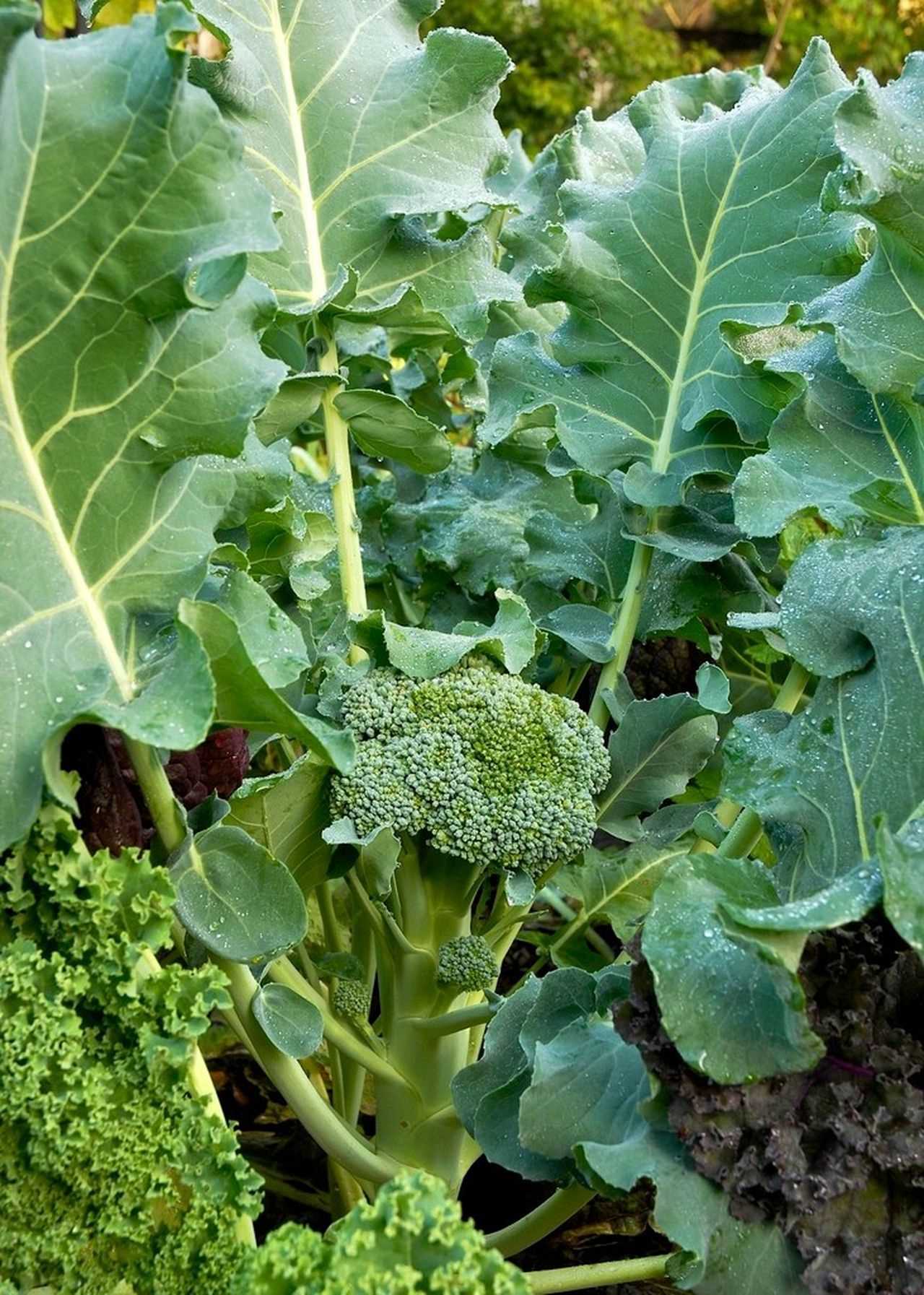
Knowing when to harvest your broccoli is crucial for obtaining the best flavor and texture. Harvesting too early or too late can negatively affect the quality of your crop. Here are some tips on how to harvest your broccoli at the right time:
- Watch for the right size: Broccoli heads should be firm and compact, about 6 to 8 inches in diameter. If the heads start to loosen and separate, it’s a sign that they are overmature.
- Inspect the color: Look for dark green or blueish-green heads. Avoid harvesting broccoli with yellow or discolored heads, as they are likely past their prime.
- Check the florets: The individual florets on the head should be tightly closed and not yet blooming. Once the florets start to open, the flavor and texture become less desirable.
When harvesting, use a sharp knife or pruners to cut the main head of the broccoli about 5 inches below the head. Leave the leaves and side shoots intact, as they can produce smaller secondary heads that you can harvest later.
After the main head is harvested, keep an eye on the plant for any new side shoots that may develop. These secondary heads can be harvested when they reach a size similar to the main head. Regularly harvesting these side shoots will encourage the plant to keep producing more throughout the growing season.
Remember that broccoli loves cool weather, so it’s best to harvest in the morning or evening when the temperature is cooler. This will help preserve the flavor and freshness of the harvested heads.
Storing and Using Harvested Broccoli
After harvesting, it’s important to properly store and use your broccoli to maintain its quality. Follow these tips:
- Keep it cool: Store broccoli in the refrigerator at a temperature of around 32°F to 40°F (0°C to 4°C). This will help extend its shelf life and maintain its crispy texture.
- Remove excess moisture: Before storing, make sure to wipe off any excess moisture from the heads. Dampness can cause the broccoli to spoil more quickly.
- Use it fresh: Broccoli is best when used within a week of harvesting. To enjoy its optimal flavor and tenderness, try to incorporate it into your meals as soon as possible after harvesting.
- Freeze for later use: If you have excess broccoli, you can blanch it briefly in boiling water, cool it in an ice bath, and then freeze it in airtight containers or bags. Frozen broccoli can last for several months and can be used in soups, stir-fries, and other dishes.
By harvesting your broccoli at the right time and properly storing and using it afterwards, you can enjoy the fresh and delicious flavors of this nutritious vegetable throughout the year.
Storing and Preserving Broccoli
Once you have harvested your broccoli, it’s important to store it properly to maintain its freshness and taste. Here are some tips for storing and preserving your broccoli:
1. Cooling and Washing
First, remove any leaves or stems that are discolored or damaged. Then, rinse the broccoli under cold water to remove any dirt or debris. Make sure to shake off any excess water before proceeding to the next step.
2. Refrigerating
Broccoli should be stored in the refrigerator to keep it fresh. Place the broccoli in an airtight container or wrap it in a damp paper towel and store it in the vegetable drawer of your refrigerator. Make sure the temperature is set between 32°F (0°C) and 40°F (4.4°C) to maintain the freshness of the broccoli.
3. Freezing
If you have a surplus of broccoli or want to preserve it for a longer period, freezing is a great option. Follow these steps to freeze broccoli:
- Blanch the broccoli by dipping it in boiling water for 3 minutes.
- Immediately transfer the blanched broccoli into an ice bath to stop the cooking process.
- Drain the broccoli and pat it dry with a paper towel.
- Place the broccoli in airtight freezer bags or containers, removing as much air as possible.
- Label the bags or containers with the date and store them in the freezer.
Frozen broccoli will stay fresh for up to 12 months. When you are ready to use it, simply thaw it in the refrigerator or cook it directly from frozen.
4. Preserving Broccoli in Other Forms
If you prefer to preserve your broccoli in other forms, you can try pickling or fermenting. Pickled broccoli is a great addition to salads and sandwiches, while fermented broccoli makes a healthy and flavorful snack. There are numerous recipes and techniques available online for pickling and fermenting broccoli.
5. Using a Food Dehydrator
If you have a food dehydrator, you can also dry your broccoli. Cut the broccoli into small pieces, blanch them briefly, and then place them in the dehydrator until they are completely dry. Store the dried broccoli in an airtight container and use it in soups, stir-fries, or as a healthy snack.
| Storage Method | Length of Preservation |
|---|---|
| Refrigeration | Up to 1 week |
| Freezing | Up to 12 months |
| Pickling | Indefinite |
| Fermenting | Indefinite |
| Drying | Indefinite |
By properly storing and preserving your broccoli, you can enjoy its fresh and nutritious taste long after harvesting.
Delicious Broccoli Recipes to Try
1. Roasted Broccoli with Parmesan
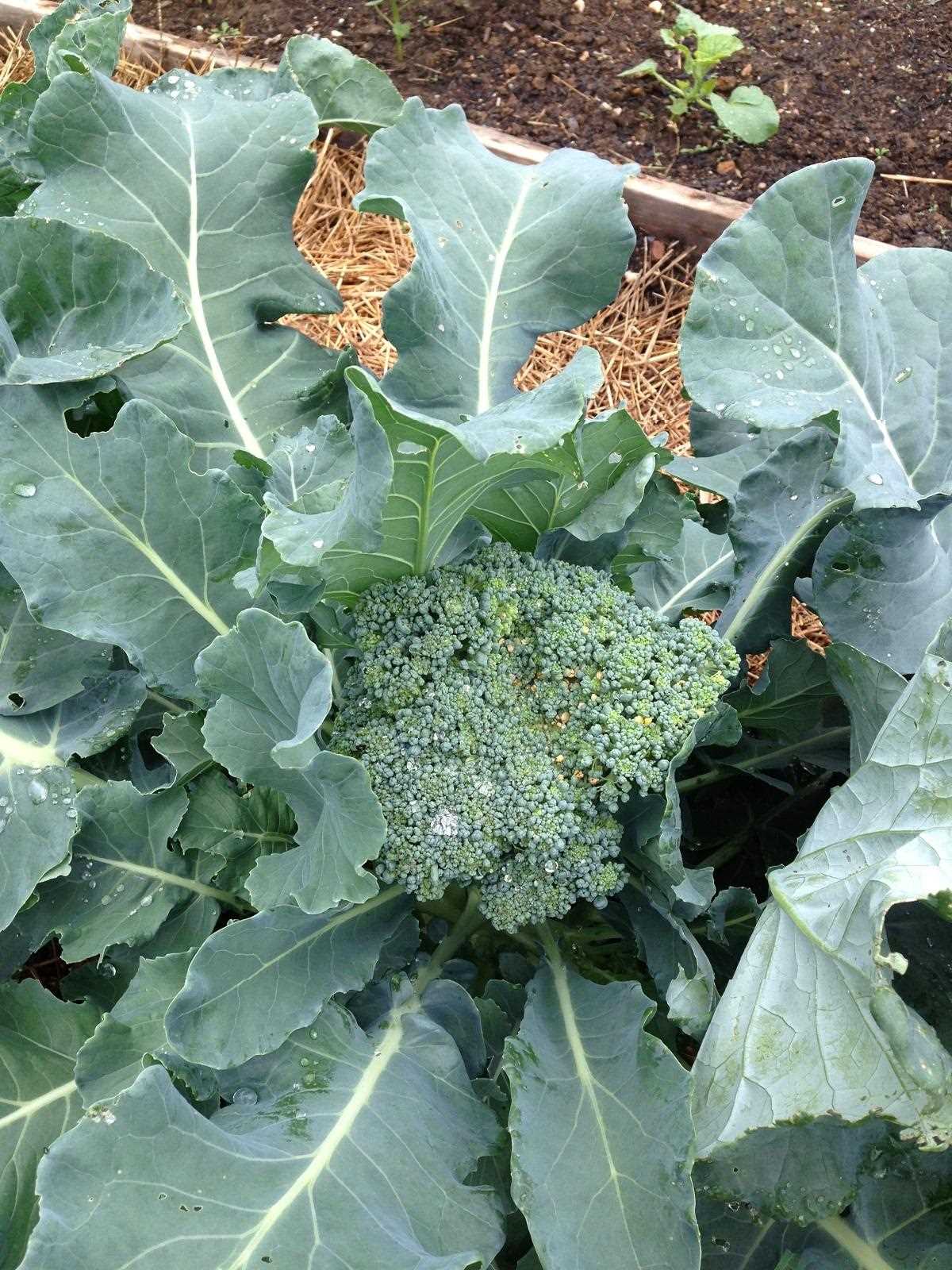
Ingredients:
- 1 head of broccoli
- 2 tablespoons olive oil
- 1/4 cup grated Parmesan cheese
- Salt and pepper to taste
Instructions:
- Preheat your oven to 425°F (220°C).
- Cut the broccoli into florets.
- Toss the broccoli florets with olive oil, salt, and pepper until well coated.
- Spread the broccoli evenly on a baking sheet.
- Roast in the preheated oven for about 20 minutes or until the edges are crispy.
- Sprinkle grated Parmesan cheese over the roasted broccoli and return to the oven for another 2-3 minutes until the cheese is melted and golden.
- Serve hot and enjoy!
2. Broccoli Soup
Ingredients:
- 2 heads of broccoli
- 1 large onion, chopped
- 3 cloves of garlic, minced
- 4 cups vegetable broth
- 1 cup milk or cream
- Salt and pepper to taste
Instructions:
- Trim the broccoli into florets and chop the stems.
- In a large pot, sauté the onion and garlic until they become translucent.
- Add the broccoli florets and stems to the pot and cook for a few minutes.
- Pour in the vegetable broth and bring to a boil.
- Reduce the heat and let it simmer until the broccoli is tender.
- Blend the soup until smooth using an immersion blender or transfer to a blender.
- Return the soup to the pot, stir in the milk or cream, and season with salt and pepper.
- Heat the soup until warmed through and serve hot.
3. Broccoli Salad
Ingredients:
- 2 heads of broccoli, cut into small florets
- 1/2 cup dried cranberries
- 1/2 cup chopped walnuts
- 1/4 cup diced red onion
- 1/2 cup mayonnaise
- 2 tablespoons apple cider vinegar
- 2 tablespoons honey
- Salt and pepper to taste
Instructions:
- In a large bowl, combine the broccoli florets, dried cranberries, chopped walnuts, and diced red onion.
- In a separate small bowl, whisk together the mayonnaise, apple cider vinegar, honey, salt, and pepper until well combined.
- Pour the dressing over the broccoli mixture and toss until everything is evenly coated.
- Refrigerate for at least 30 minutes to allow the flavors to meld together.
- Serve chilled and enjoy!
4. Broccoli Stir-Fry
Ingredients:
- 2 heads of broccoli, cut into florets
- 1 red bell pepper, sliced
- 1 yellow bell pepper, sliced
- 1 carrot, julienned
- 2 cloves of garlic, minced
- 3 tablespoons soy sauce
- 1 tablespoon honey
- 1 tablespoon sesame oil
- 2 tablespoons vegetable oil
Instructions:
- In a small bowl, whisk together the soy sauce, honey, and sesame oil.
- Heat the vegetable oil in a large skillet or wok over medium-high heat.
- Add the garlic and sauté for a minute until fragrant.
- Add the broccoli, bell peppers, and carrot to the skillet and stir-fry for about 5 minutes or until the vegetables are crisp-tender.
- Pour the soy sauce mixture over the vegetables and toss to coat evenly.
- Cook for an additional 2-3 minutes until the sauce thickens slightly.
- Remove from heat and serve hot.
5. Broccoli and Cheese Casserole
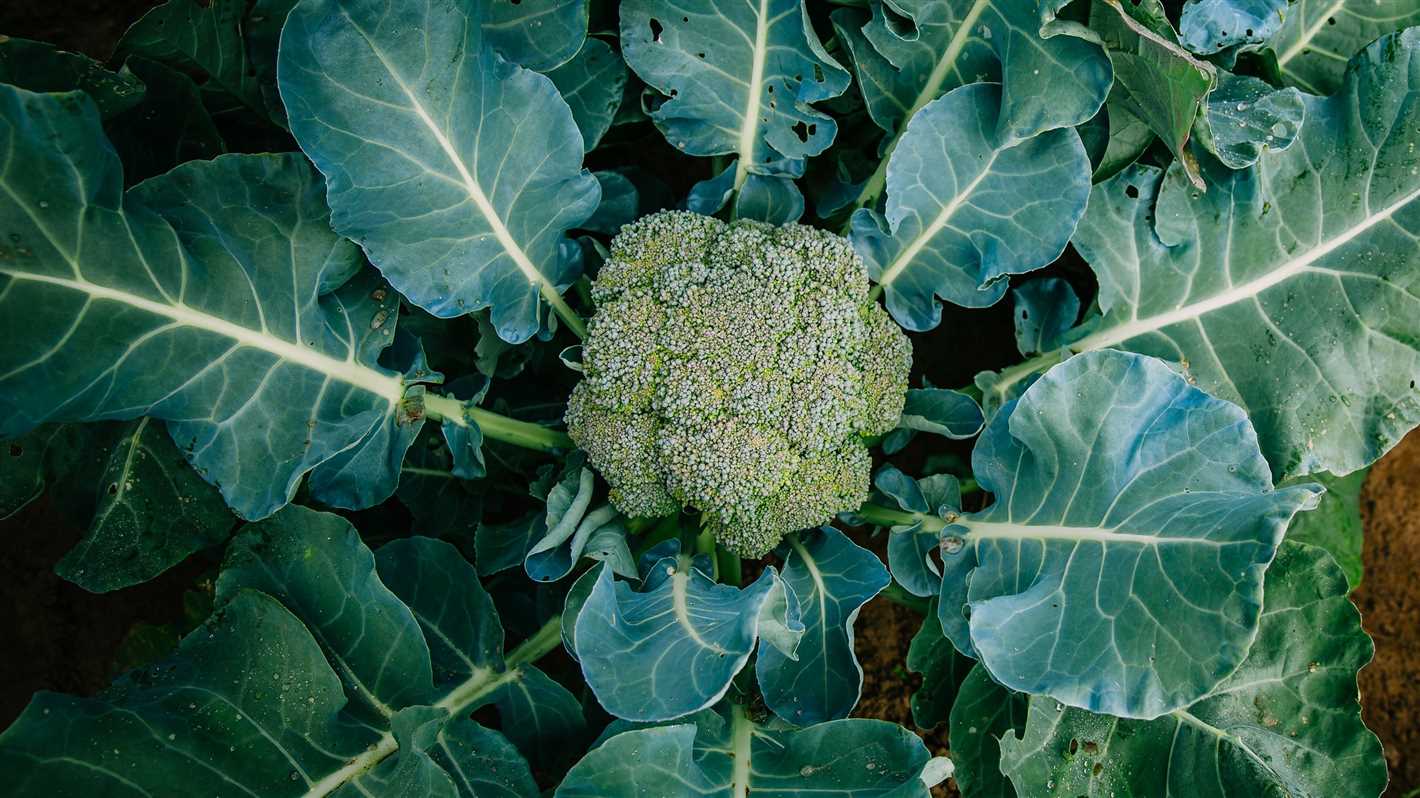
Ingredients:
- 2 heads of broccoli, cut into florets
- 1 cup shredded cheddar cheese
- 1/2 cup grated Parmesan cheese
- 1/2 cup breadcrumbs
- 1/2 cup milk
- 2 tablespoons butter
- 2 tablespoons all-purpose flour
- Salt and pepper to taste
Instructions:
- Preheat your oven to 375°F (190°C) and grease a baking dish.
- Steam or blanch the broccoli until slightly tender.
- In a small saucepan, melt the butter over medium heat.
- Whisk in the flour to create a roux and cook for a minute.
- Gradually whisk in the milk and cook until the sauce thickens.
- Remove from heat and stir in the cheddar cheese and half of the Parmesan cheese until melted.
- Season the sauce with salt and pepper to taste.
- Place the steamed broccoli in the prepared baking dish and pour the cheese sauce over it.
- In a separate bowl, combine the remaining Parmesan cheese with the breadcrumbs.
- Sprinkle the breadcrumb mixture over the broccoli and cheese sauce.
- Bake in the preheated oven for about 20 minutes or until the top is golden and bubbly.
- Serve hot and enjoy!
| Recipe | Cooking Time | Servings |
|---|---|---|
| Roasted Broccoli with Parmesan | 20 minutes | 4 |
| Broccoli Soup | 30 minutes | 6 |
| Broccoli Salad | 15 minutes | 6 |
| Broccoli Stir-Fry | 15 minutes | 4 |
| Broccoli and Cheese Casserole | 45 minutes | 6 |
“Question-Answer”
What are some tips for growing broccoli?
Some tips for growing broccoli include planting the seeds or seedlings in well-drained soil, providing full sun exposure, and ensuring regular watering and fertilizing. It is also important to keep an eye out for pests and diseases and to harvest the broccoli heads before they start to flower.
Can broccoli be grown in containers?
Yes, broccoli can be successfully grown in containers. To do so, choose a large container with good drainage, fill it with a well-draining potting mix, and place it in a sunny location. Regular watering and fertilizing are essential for container-grown broccoli, and it is important to provide support for the plants as they grow.
What are some common varieties of broccoli?
Some common varieties of broccoli include Calabrese, DeCicco, Green Goliath, Waltham, and Romanesco. Calabrese is a popular variety with large, blue-green heads, while DeCicco is known for its smaller, loose heads. Green Goliath is a heat-tolerant variety, Waltham has a long growing season, and Romanesco has unique, fractal-like heads.
How long does it take for broccoli to mature?
The time it takes for broccoli to mature can vary depending on the variety and growing conditions. On average, broccoli takes about 60 to 90 days from planting to harvest. It is important to monitor the plants closely and harvest the heads when they reach the desired size and before they start to flower.
Can broccoli be grown in hot climates?
While broccoli is traditionally a cool-season crop, certain varieties have been developed to tolerate hot climates. Heat-tolerant varieties, such as Green Goliath, can be grown in hot climates with proper care and attention to watering and shade protection. However, it may still be more challenging to grow broccoli in hot climates compared to cooler regions.
What are some natural pest control methods for broccoli?
Some natural pest control methods for broccoli include companion planting with flowers, herbs, or other vegetables that repel pests, such as marigolds, thyme, or onions. Additionally, handpicking pests, such as caterpillars or aphids, and using organic pest control sprays, such as neem oil or insecticidal soap, can help control pest populations without the use of chemical pesticides.







